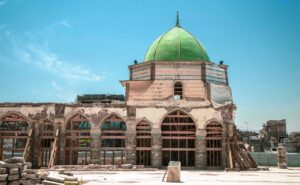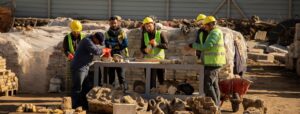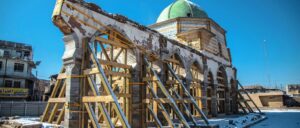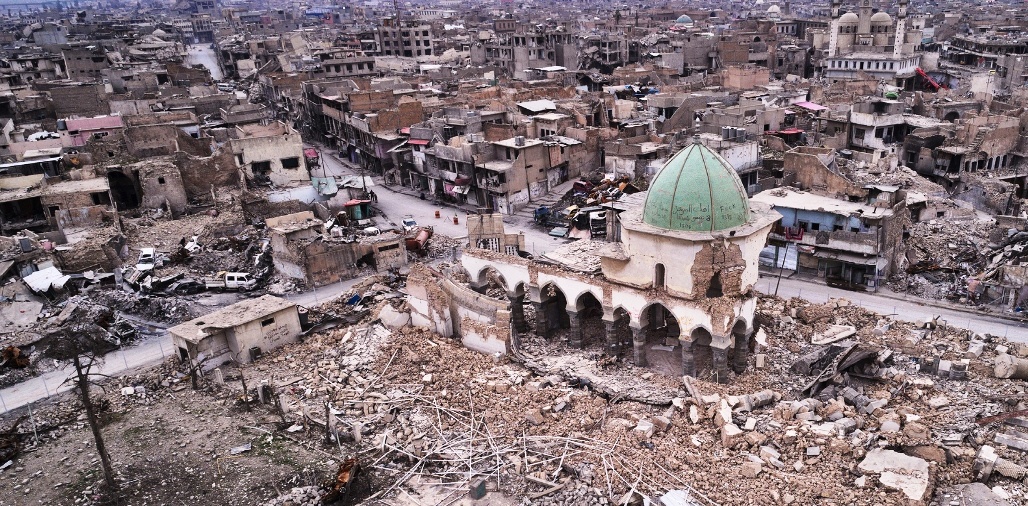On November 16, 2020 in Mosul, Iraq, UNESCO—in close coordination with the Iraqi Ministry of Culture, the Iraqi Sunni Endowment and with support from the United Arab Emirates—launched an international design competition for selecting a winning design entry for the Reconstruction and Rehabilitation of the Al Nouri complex in Mosul.
The international design competition for this project will end on March 26, 2021. It wishes to attract submissions from a wide range of architects or teams of architects and engineers from around the world to submit a design proposal for reconstructing and rehabilitating the Al Nouri complex.
 Known for being one of the oldest cities in the world, Mosul—“the linking point” in Arabic—is now at the beginning of its recovery process, after the destruction infringed by conflict 2014.
Known for being one of the oldest cities in the world, Mosul—“the linking point” in Arabic—is now at the beginning of its recovery process, after the destruction infringed by conflict 2014.
“The launch of this architectural competition is an opportunity for world talents to participate in rebuilding the Al-Nouri Mosque and the Al Hadba minaret. This means restoring respect for Iraq’s heritage and more specifically, Mosul’s heritage,” said the Minister of Culture of Iraq, Hasan Nadhem. “It is about rebuilding the people’s memory and restoring the damage that Da’esh left behind.”
As part of the Revive the Spirit of Mosul initiative, UNESCO, the Iraqi Ministry of Culture and the Iraqi Sunni Endowment, with the generous financial support of the United Arab Emirates, have committed to reconstruct and rehabilitate the Al Nouri Complex in Mosul.
The reconstruction of this important landmark of the city is of upmost importance to send a strong signal of resilience and hope, as a first step towards social cohesion and reconciliation in the post-conflict Iraq. Indeed, historical sites and monuments are not only a scientific tool of knowledge, but they also represent a powerful symbol of belonging, community, and identity, whose rehabilitation will facilitate recovering the memory of the ‘Moslawis’ that once felt part of a vibrant and emerging city.
 The Al Nouri complex, since its construction in the second half of the XII century, has constituted a core site in the urban life and development of the City of Mosul. In fact, looking at the historical transformations of the city over the centuries, it appears clear how the complex can be classified among those ‘main monuments’ influencing the different street layouts.
The Al Nouri complex, since its construction in the second half of the XII century, has constituted a core site in the urban life and development of the City of Mosul. In fact, looking at the historical transformations of the city over the centuries, it appears clear how the complex can be classified among those ‘main monuments’ influencing the different street layouts.
“Rebuilding Al-Nouri Mosque and its minaret is more than about rebuilding stones,” said the President of the Sunni Waqf of Iraq, Saad Kambash. “It is about telling the story of all the people who defied death to give space for hope and let humanity live on.”
Located in the north-eastern sector of the Old City, with an area of approximately 11.050 sq., the Al Nouri complex includes main landmarks, such as the Al-Hadba Minaret and Al Nouri Prayer hall, a number of secondary buildings and an extensive open area.
Severely damaged in 2017, the complex will be the subject of an integrated rehabilitation program, meant to reconstruct the Al Nouri prayer Hall, and, at the same time, integrate new functions to be hosted in the newly designed or rehabilitated secondary buildings, which will enhance further the role that this important complex has played for the ‘Moslawis’ over the century. The program will also encompass the redesign of the open space and the relation of the complex with the surrounding historical urban fabrics, through its new gates and fences, in order to recover its central function in the urban life of the Old City.
 UNESCO calls on talents around the world to participate in an exclusive International Architectural Competition for the reconstruction and rehabilitation of the Al-Nouri Mosque Complex, funded by the United Arab Emirates (UAE), in the Iraqi city of Mosul. Joining the initiative “Revive the spirit of Mosul” is a unique opportunity to change the lives of the people of Mosul and help them rebuild their city after Daesh’s occupation.
UNESCO calls on talents around the world to participate in an exclusive International Architectural Competition for the reconstruction and rehabilitation of the Al-Nouri Mosque Complex, funded by the United Arab Emirates (UAE), in the Iraqi city of Mosul. Joining the initiative “Revive the spirit of Mosul” is a unique opportunity to change the lives of the people of Mosul and help them rebuild their city after Daesh’s occupation.
The competition calls for a conceptual design, which includes the conservation of the standing structures of the prayer hall and its integration into the new buildings, as well as the rehabilitation of some historical buildings and their integration into the new designs, including the landscaping design of the entire site. By creating new spaces dedicated to the community – for education, social and cultural activities – the project envisions a space to serve community in ways which go beyond its principal religious function.
An international jury composed of 9 members and 2 alternate members will select the winning designer and the four runners-up. The jury and its alternate members, in alphabetical order, are: Ms. Howayda Al-Harithy (Saudi Arabia), Mr. Ahmed Yousef Al-Omari (Iraq), Ms. Raya Ani (Iraq), ), Mr. Xavier Casanovas (Spain), Ms. Amel Chabbi (United Arab Emirates), Ms. Shahira Fahmy (Egypt), Mr. Dominique Perrault (France), Mr. Wang Shu, (China), Ms. Marina Tabassum (Bangladesh), Ms. Shadia Touqan, (Palestine) and Mr. Jerzy Uścinowicz (Poland).
A worldwide outreach campaign will invite architects, engineers and students from around the world to submit a design proposal for the Al-Nouri Mosque Complex. It is especially important to encourage the people of Iraq to participate in their own history-making and reconstruction.
Since its construction in the second half of the XII Century, The Al-Nouri complex has been a core site in the life and development of the city of Mosul.
“The International Architectural Design Project Competition for the design of the Al Nouri mosque complex was born out of our firm belief that a project of this importance must ensure wider community participation,” said UAE’s Minister of Culture and Youth, Noura bint Mohammed Al Kaabi. “Al Nouri mosque and its magnificent Al Hadba minaret embody the civilizational essence of Mosul and Iraq. As a witness the rich history of Mosul, this place of worship represents values and principles that define us as human beings.”
Beyond the restoration and reconstruction of historical landmarks, the initiative includes:
The rehabilitation of historical fabric of the Old city of Mosul
The revival of the city’s cultural life
Strengthening the educational system and ensuring quality education for all.
All images courtesy of UNESCO.

